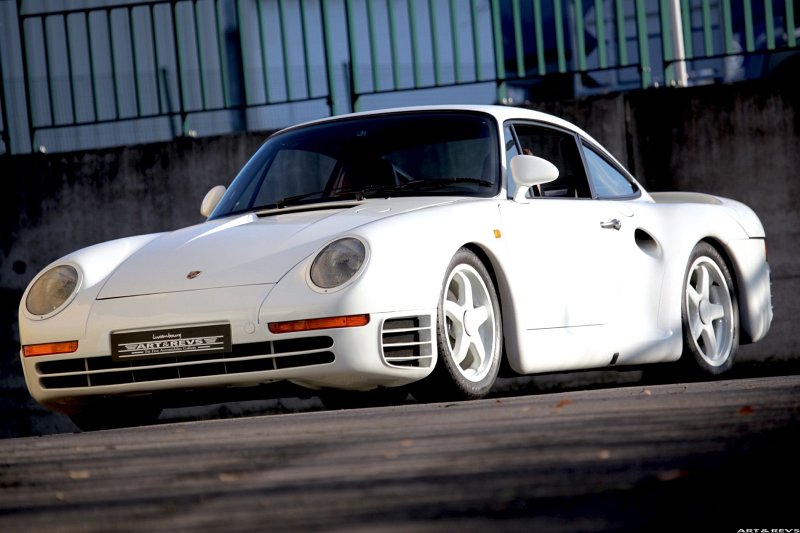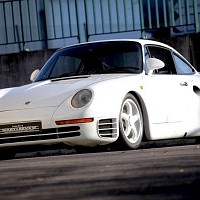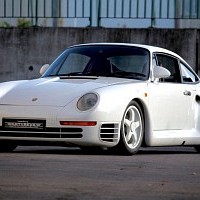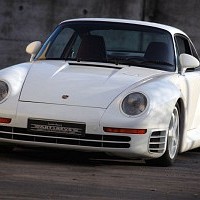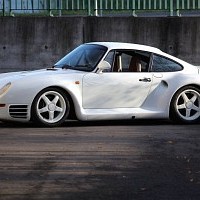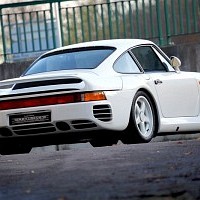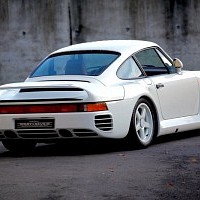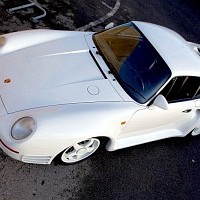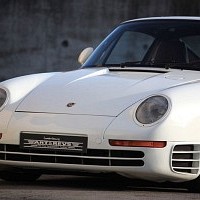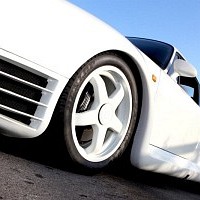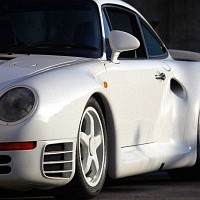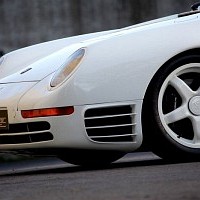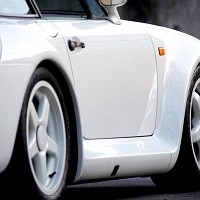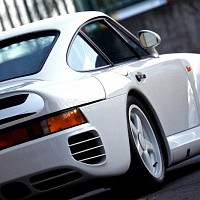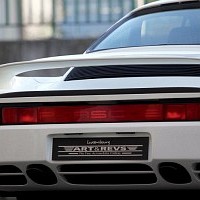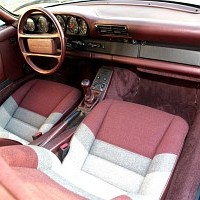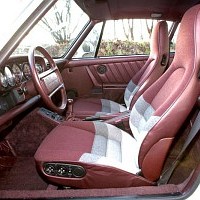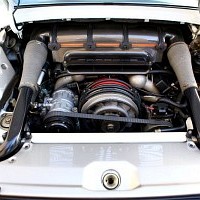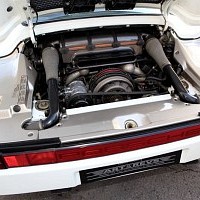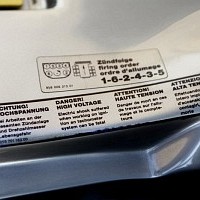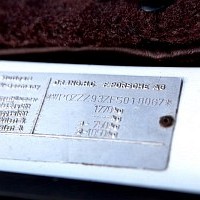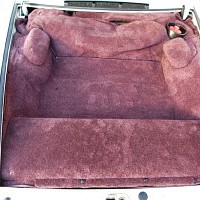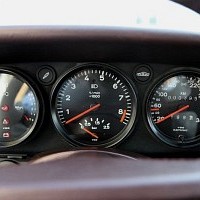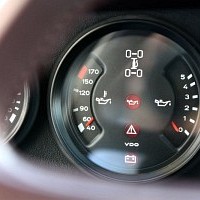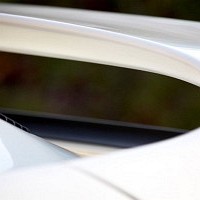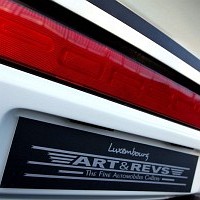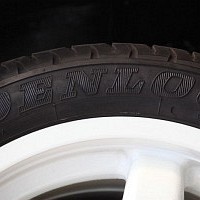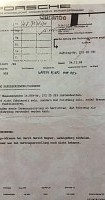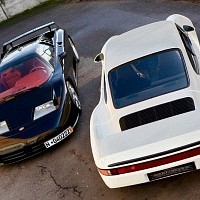Description
This is a quite a unique opportunity in a dealer career to offer a Porsche factory prototype, considering they normally don’t come to the market, being destroyed or keep at the museum. This mind boggling 959, chassis number WPOZZZ93ZFS010067 was built in 1985, given the internal code « V1KOM » and registered BB-PW481. In 1985 Helmutt Bott ( head of the 959 development ) has taken 29 930 chassis from the Porsche factory to turn them in Weissach ( Porsche Motorsport dept ) into the 959 Pre-production prototypes and these were called « F,N or V ». These 29 prototypes were the latest ones and used for media coverage, crash tests and road tests. This car is one of the the 7 « V - Series » which were assigned to the road tests, this particular one was used for ABS and tyre development. Unfortunately most of the 29 Prototypes were destroyed and scrapped at the end of the 959 program.« 10067 » is one of the 4 959 prototypes survivor and one of the only two road going ones. Interestingly enough, the first owner was Professor Tachio Saito, who happened to be a close friend of Ferry Porsche. He noticed chassis 10067 during a visit to the factory whilst translating a book that Dr Porsche had written (Helmut Bott’s personal 959 was the preceding chassis, number 10066). As the founder of the Porsche Owners’ Club of Japan, as well as its first president, Professor Saito was more than qualified as one of Porsche’s preferred customers. A copy of factory correspondence, dated 4 December 1989 and addressed to Saito, refers to certain tasks to be undertaken by the factory prior to his acquisition of this prototype. The letter was written by Herr Willrett, believed to be Elmar Willrett, who was a Porsche engineer who was deeply involved in the development of both the 935 and 935 racing engines and who worked under Rolf Sprenger in the « Sonderwisches » (Special Wishes) Program. The document suggests that this car was to be prepared for display purposes, with functional brakes and steering. Once an agreement was settled, Porsche A.G. completed the restoration of the car, and after 16 months, Professor Saito took delivery of his prototype 959.
The professor maintained the 959 for only a short period of time, until noted collector Hideyasu Ohba, of Tokyo, Japan, acquired it for his collection of historic Porsches. In 2000, Mr Ohba sold this car to Minoru Miura, of Chiba, Japan. In 2006, still in Japan, the 959 was then acquired by Mr Shigeru from the Miura Collection. The car went to another 2 hands before coming up to the market via Art & Revs.
Being an original Protoype, this car comes with its pre-production magnesium wheels, « Denloc » Dunlop tires, brakes and some lightweight panels. All the production 959s were delivered with Bridgestone RE71 tires, the Dunlops were not retained though they incorporated a world premiere with a kind of « Run Flat » technology. The car is now only 400km and can only be described as being in new condition. It is fully working and was the subject to a recent overhaul and driven for 5 km.
Porsche factory no longer releases any Prototype to the public, this is a unique opportunity to acquire one. Not only it is a Porsche prototype, it doesn’t get any better than owning « THE » 959 one.
Model history
The Porsche 959 is one of these cars you cannot make a short story about them. This is the most advanced road Porsche ever built and one of the most impressive in the automotive history. « Porsche engineers were given a goal and set free, the 959 put Porsche on the map when it came to innovative automotive technology. There were 934s and 935s, and even the 956/962, but to put it all together in a street car was unheard of. It was a major factor in moving Porsche's racing prowess from the track to the street. ». How come a better explanation from the 959’s genesis could be ? This is the one from Dieter Landenberger, the head of Porsche historical archives.
In 1981 there was a big change at the head of Porsche with the replacement from Ernst Fuhrmann by Peter Schultz, a new direction and strategy were given then. Fuhrmann in the mid 70s thought the 911 was going to an end and stopped its development to focus on the front engined cars ( 924/928/944 ) but Schultz thought very different. In 1981 he gave the green light to work on the project of a « Super » 911 with the aim of building a Group B racing version complying with the all-new FIA regulations. The car was designed and built at the Porsche Motorsport department at Weissach and a prototype called « Gruppe B » shown at the 1983 Frankfurt show. It was an immense success with its amazing specifications and design, many though this could never be turned into a road car. It took another two years of development and testings to have the production car ready and to list a few of the « world premieres » it had : four wheels drive, ABS 4 channels, twin turbos, tyre pressure monitoring, adjustable torque balance front/rear from 20 to 80%, 17 inches wheels, adjustable ride height, 6 speeds gearbox and so on. The 959 was so advanced technologically that it immediately sat new standards in terms of performance and drivability. The production car launched in 1986 had 450 HP and 317km/h as top speed and ran the standing km in only 21,7 sec, beating the 288 GTO by 2secs. Porsche always have the habit of validating a new technology via Motorosport and in 1986, Jacky Icks won the Paris - Dakar race and René Metge / Claude Ballot Léna won their class at Le Mans and finished 7th OA with race prepared 959s, which other car did it ? The fabulous 959 is the first step and rolling laboratory of the 911’s rebirth. According to Porsche only 292 of them were built ( as per comparaison Ferrari built 1311 F40s ) and all sold on pre order. This is one of the rarest Porsche ever built and probably the most charismatic of their road cars.

